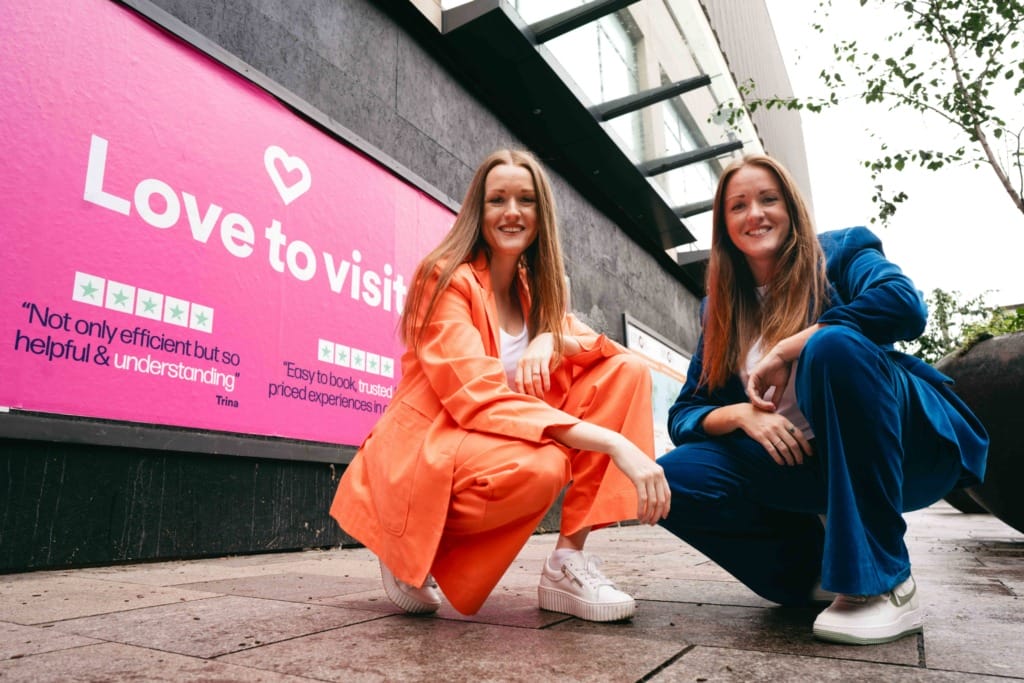The last ten years have brought monumental shifts in consumer behaviour. Propelled largely by innovation in social media and mobile technology, consumers found themselves able to discover differentiated products and services at record speed from the palm of their hand. For brands, it meant direct engagement with their customers and access to an abundance of data to reach more consumers, allowing household names like Airbnb, Netflix, Calm and Gymshark to emerge.
Then Covid-19 came along and drove millions more online overnight. Digitally native DTC brands experienced rapid growth as their customer pools grew, while traditional retailers were forced to close their physical doors and accelerate their digital offerings to compete. More DTC brands appeared and funnelled marketing budgets into Facebook and Google to draw customers. As a result, 2021 saw DTC businesses become a hot investment opportunity. They attracted record amounts of capital from generalist investors, driving up valuations, and a slew of DTC darlings like Warby Parker and Allbirds went public in high-profile IPOs.
But 2022 bore a very different funding landscape. Against a macroeconomic backdrop of soaring inflation and a looming recession impacting consumer confidence, coupled with the rising costs of customer acquisition and supply chain challenges, many DTC brands faced unprecedented challenges. Generalist investors pulled back and businesses that went public in 2021 saw market valuations decline. Consumers craved meaningful physical connections throughout all aspects of their lives, forcing DTC businesses to adopt omnichannel offerings to acquire and retain customers.
In addition, the pandemic brought change to the entire fabric of the consumer landscape. It disrupted education systems, reshaped how we work, put unprecedented pressure on healthcare systems and crippled supply chains.
Fast forward to today and we’re at an inflection point where this covid dislocation is fuelling the next generation of consumer businesses. We chatted with our Head of Origination Anshul Gupta and Seed Investor, Nick Green, to find out about the big consumer trends shaping this next generation and where the opportunities are for disruption.
TREND ONE: CONSCIOUS CONSUMERISM
It’s not new that consumers are demanding more from businesses. Environmental, social, and governance concerns influence about half of global consumers as they look to support businesses that are mission-driven, authentic and take a stand for something bigger.
From our early investments in Leon and Finisterre to more recently in Vinterior, Piglet in Bed, Code First Girls, TALA and Facetheory, conscious consumerism has shaped our investment thesis since Active’s inception. As Anshul points out, “qualities like mission-driven, sustainable, inclusive and good provenance have all accelerated and are table stakes for brands now.”
But the expectations from consumers are evolving faster than ever before and more startups are emerging to meet this growing demand. “There are lots of circular economy plays developing as this becomes increasingly sought out by consumers who are looking for more ethical and sustainable ways to shop. One area that’s taking off is the resale market for children’s clothes. It makes sense. Children grow quickly, and the lifecycle of their clothes is short. Resale is not only sustainable, but it’s also more economically viable,” says Nick.
Gen Z and millennial audiences in particular are prioritising brands that address social and environmental issues, resulting in sustainable and ethical brands capturing more market share. In fact, 62% of Gen Z consumers prefer to purchase from sustainable brands and are willing to pay more for ethically produced goods.
Furthermore, there are large segments of society that have been overlooked for generations and there has been a rapid acceleration of new brands emerging to serve these underserved groups. From hair care to edtech platforms addressing gender gaps, brands tackling broader social issues and discrimination are coming out on top.
One company looking to address the long-term gender skills gap is our portfolio company Code First Girls. As an impact-driven education company, Code First Girls supports women and non-binary people to pursue careers in tech by providing access to coding education and employment for free. Not only is Code First Girls tackling a huge problem in society, but its differentiated model means it’s free at the point of use for the consumer and paid for by large blue-chip clients, putting it at an advantage in the market. “It’s incredibly hard to acquire a consumer directly on paid advertising but when you make it free for the consumer with a valuable underlying product, you have a superior acquisition funnel. Corporates hugely benefit through access to high-quality and diverse talent, which is why the model comes together so well,” says Anshul.
Increasingly B2B and B2B2C solutions are emerging to help solve pain points for consumers and consumer brands, like Reskinned which works directly with businesses like Finisterre to power their resale offering. Our investment thesis allows us to invest across the whole consumer landscape, including different business models and technologies enabling brands to enhance the consumer experience.
Conscious consumerism is here to stay and we’re keeping a close eye on new products and services for the underserved consumer, as well as resale, repairs, recommerce and rental platforms.
TREND TWO: WELLNESS
In recent years we’ve witnessed increased awareness and public debate around physical and mental well-being, catapulting wellness into the mainstream. Wellness determines how we ultimately look, feel, interact with others and thrive in life and work, and its reach is influencing all categories across the consumer landscape, from health and mental well-being, supplements and food & drink to wellness at work, pet care, what we wear, and financial stability.
“There is a huge movement towards wellness rather than health and healthcare, where it is mainly corrective. It is becoming information-led and preventative, as well as about self-care and more holistic wellness,” explains Anshul. The dialogue has opened up about health and wellness, especially for segments of society like women where it has been historically overlooked, and solutions are being created that are more inclusive.
Take wellness at work for example. Covid totally reshaped the way we work, and employers today increasingly understand the moral and business case for supporting the mental and physical well-being of their staff. Not only is it the right thing to do, but health and well-being have a huge impact on organisations, from absenteeism to talent retention, so there is a strong business case too.
Wellness is also reaching into categories like pet care. “We’re seeing lots of healthier pet food offerings as well as the emergence of mental health services for pets. Pet care is interesting because it’s proven to be a more recessionary-proof category,” adds Nick. With the pet care industry globally estimated to be worth $200bn and 87% of pet owners seeing their pets as family, consumers are more likely to spend on their pets as purse strings tighten.
Our portfolio companies Leon, Urban Legend, Finisterre, Context Travel and TALA have been at the forefront of shaping the wellness trend in different ways, from healthy eating to exercise and experience-led travel. As consumers look for the next generation of businesses that will help them to lead healthier and happier lives, we’re excited about the ways wellness will shape the future of the consumer economy.
TREND THREE: CONTENT AND COMMUNITY-DRIVEN
As brand investors, we’ve always looked for businesses that are generating exceptional customer engagement and building strong communities around them, without a heavy reliance on paid marketing. While digital channels remain vital to business success, DTC has been misunderstood as a business model rather than a marketing channel, and one route to market of many. As brands run into the limitations of the solely DTC model and the high costs associated with paid acquisition, more and more are realising that multi-channel distribution is key to success.
“Diversifying marketing mix and moving to other platforms where brands can be promoted and have a more multi-dimensional, multi-channel distribution strategy is becoming so important,” says Anshul. Some brands are finding product market fit and building a strong community via platforms like Reddit and Discord, while others are entering product partnerships with like-minded brands or launching pop-ups. The rapid rise of TikTok and its personal approach to content sharing also allows businesses to increase brand awareness and build community in a more natural and authentic way.
Nick highlights how brands are tapping into other channels like live shopping or reverting to traditional marketing channels like mail orders, brochures and emails, “Live shopping experiences enhance the capabilities of sellers, and this is transpiring in the e-commerce space.”
There has been a lot of hype around the metaverse and the open opportunity for brands to take advantage of this evolving technology. From virtual, immersive environments via metaverse platforms like Roblox to mini-games and NFTs, some brands are embracing this to engage their customers. For example, luxury fashion brands Gucci and Dolce & Gabbana have launched exclusive digital collections and positioned themselves as trailblazers in the space. While the metaverse is increasingly being seen as a platform to engage with consumers, it remains to be seen what commercial models can be built on top of it.
B2B tech solutions are riding the wave of this trend too, enabling commerce and enhancing the consumer experience. One business we’ve spoken to is, as Anshul puts it, “powering a deeper understanding of consumer behaviour and infusing some freshness into customer acquisition by collecting data through samples”. Brands and businesses are increasingly looking for other avenues to reach their customers and B2B solutions can help.
TREND FOUR: GENERATIONAL SHIFTS
New data from Bain & Co recently showed how millennials and Generation Z accounted for all of the luxury market’s growth in 2022 in the US, with luxury shoppers getting wealthier and younger. “Gen Z’s will have more earning potential and spending power over the next five to ten years and how they engage with different products and services is changing. They are thrifty in the ways that they operate, and re-commerce is natural. They want to be financially independent and stable, invest more in education and build their savings,” explains Anshul.
As we highlighted earlier, there’s been a generational change in consumer expectations, with younger generations like Gen Z playing a vital role in shaping the future of how we live, work, produce and consume. Sustainability is fundamental to any business and Gen Z audiences are creating lucrative side hustles or moving jobs to a company that shares their values. This has given rise to new businesses targeting Gen Z consumers, like our portfolio company TALA, which offers sustainable activewear at a more affordable price or Code First Girls which facilitates women to upskill and change into tech careers for free.
Alongside the maturing Gen Z consumer, the older generation (categorised as ages 50+) is becoming more relevant than ever. “Consumers aged 50+ as a group have been massively underserved across all sub-verticals, be it education, food & drink, technology, wellness, or financial products. We’re seeing lots of businesses pop up to target this consumer,” says Nick.
Whether it’s a financial product to help them get a reasonable mortgage, which is notoriously difficult or a solution to try and get older people back into the workplace after what has been coined the “great lie-down” that took root during Covid-19 lockdowns, entrepreneurs are popping up to tap into this newly tech-savvy and historically overlooked group of consumers. And once you’ve built a following, as Anshul puts it, “they are a sticky and extremely loyal audience base.”
There is an abundance of opportunity for ambitious entrepreneurs to tap into these trends and build exceptional products and services that meet the ever-evolving demands of consumers. Ultimately, it is the businesses with a differentiated brand proposition that are solving real problems for consumers that will win in today’s market.



